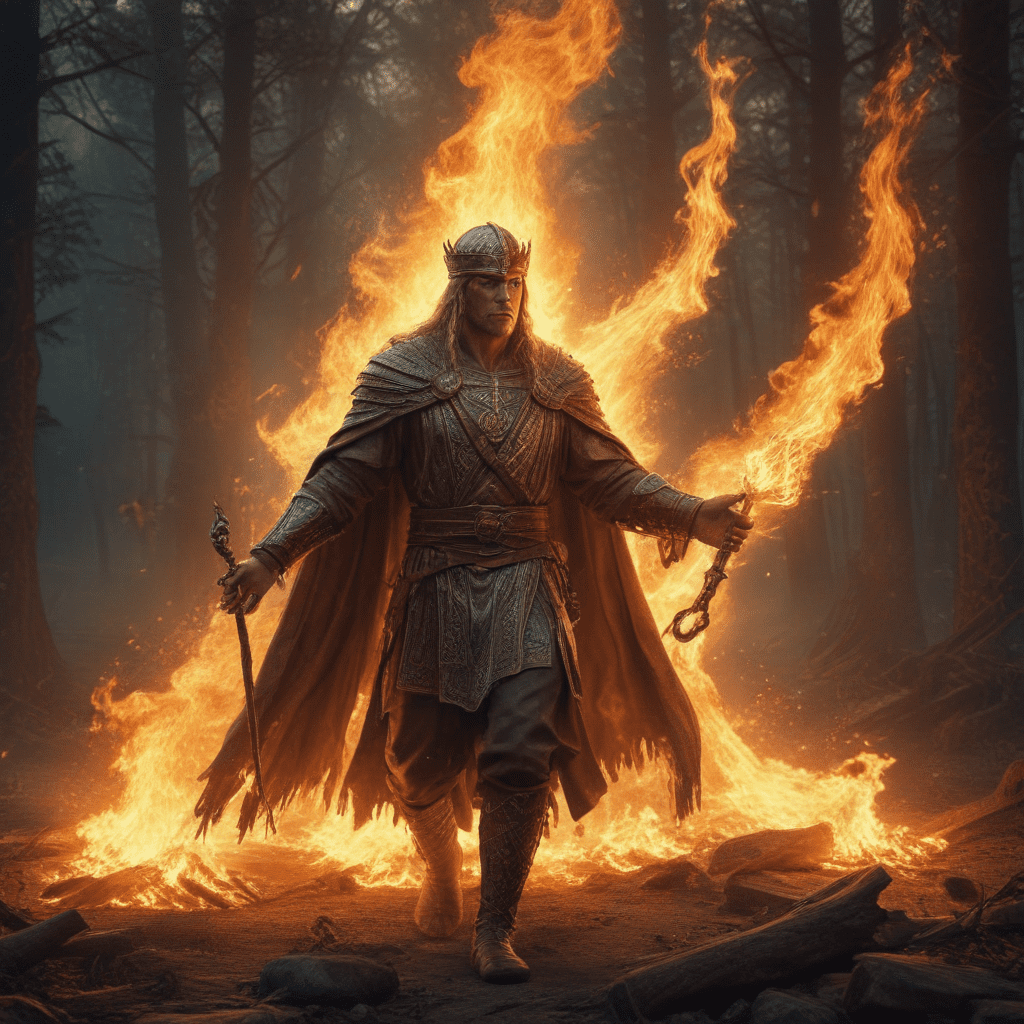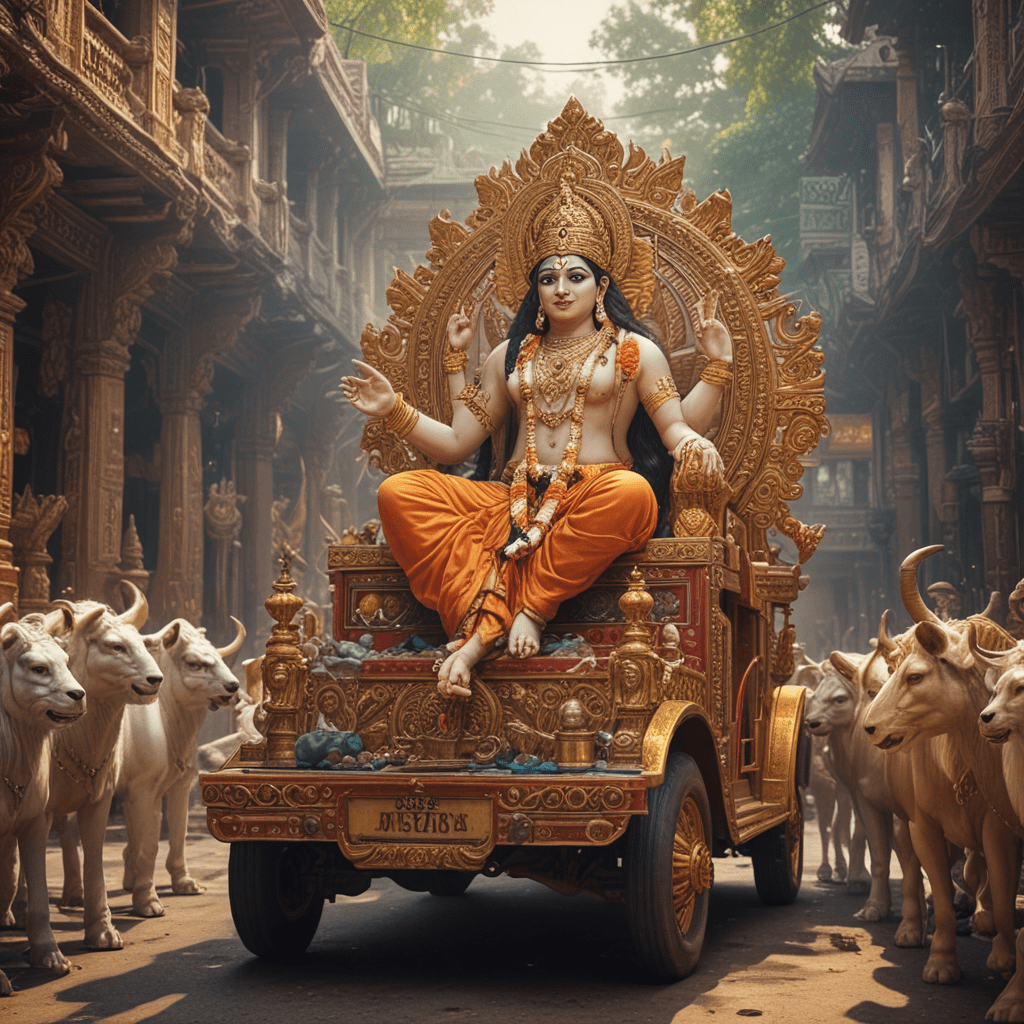Slavic Mythology: Beings of the Fire
1. Introduction
Slavic mythology is a rich tapestry of beliefs and legends, and fire holds a special place within its narratives. In the Slavic worldview, fire was not merely a source of warmth and light but a sacred element imbued with supernatural qualities. From revered deities to fearsome monsters, fire beings played a significant role in shaping Slavic mythology.
2. Fire as a Sacred Element
Fire was considered a purifying force, capable of cleansing both physical and spiritual impurities. The hearth, or ognishte, was a sacred space within the home, symbolizing warmth, unity, and the presence of protective spirits. Fire was also associated with fertility and renewal, as it played a pivotal role in agricultural rituals and celebrations.
3. Fire Spirits and Deities
The Slavs believed in a variety of fire spirits and deities who governed the flames. Among the most prominent was Ogon, the Fire Spirit, who was depicted as a benevolent being who protected homes and provided warmth during the cold winter months. Svarog, the God of Fire and Sky, was another revered deity who was associated with the creation of the world and the forging of the first tools.
4. Fire Birds and Animals
Slavic mythology features a plethora of fire birds and animals, each with its own unique characteristics and symbolism. The Firebird, or Zhar-Ptitsa, was a radiant creature believed to possess the power to grant wishes and illuminate the darkest of places. Similarly, the Fire Horse, or Ohnivý Kůň, was a mythical steed that symbolized strength, courage, and the ability to overcome obstacles.
5. Fire Demons and Monsters
Fire was not only associated with benevolence but also with darkness and destruction. The Slavs believed in a variety of fire demons and monsters, including the Ognik, small fire elementals that could both harm and protect. The Zmey, or fire-breathing dragon, was another formidable creature that symbolized chaos and devastation.
6. Fire Rituals and Beliefs
Fire played a pivotal role in Slavic rituals and beliefs. The ognishte, or sacred hearth, was a central gathering place within the home, where families gathered to share warmth, prepare meals, and perform daily rituals. Fire jumping was a popular custom, believed to have the power to purify and protect individuals from harm.
7. Fire in Folklore and Legends
Slavic folklore and legends are replete with tales of fire beings and their interactions with humans. One of the most famous stories is that of the Firebird and Princess Vasilisa, in which a young princess quests to obtain the magical Firebird that can illuminate her father's kingdom. Another popular tale tells of the Fire Horse and the Blacksmith, where a blacksmith outwits a cunning demon who attempts to steal his magical horse.
8. Fire in Slavic Art and Symbolism
Fire motifs are prevalent in Slavic art and symbolism. In traditional embroidery, fire patterns are often used to symbolize protection, fertility, and good fortune. Slavic architecture also incorporates fire imagery, with many buildings featuring chimneys and hearths adorned with intricate carvings and designs.
9. Comparisons with Other Mythologies
Slavic mythology shares similarities with other mythologies regarding fire beings. In Greek mythology, for example, the fire deity Hephaestus is known for his mastery of forging and craftsmanship. Similarly, in Native American mythology, fire spirits are often associated with healing, purification, and renewal.
10. Conclusion
Fire has long held a profound significance in Slavic mythology, encompassing both revered deities and fearsome monsters. From its sacred role in the hearth to its transformative power in rituals and legends, fire beings have played an integral part in shaping the Slavic worldview.
FAQ
Q: What is the role of Ogon in Slavic mythology?
A: Ogon is the Fire Spirit, believed to protect homes and provide warmth during winter.
Q: What is the significance of the Firebird in Slavic folklore?
A: The Firebird is a radiant creature that can grant wishes and illuminate the darkest of places.
Q: What do fire demons and monsters represent in Slavic mythology?
A: Fire demons and monsters symbolize chaos, destruction, and the darker aspects of fire's power.
Q: How was fire used in Slavic rituals and beliefs?
A: Fire was used in rituals such as fire jumping, to purify and protect individuals. It was also central to the ognishte, the sacred hearth within the home.
Q: What are some examples of fire motifs in Slavic art and symbolism?
A: Fire patterns are common in traditional embroidery, representing protection and fertility. Slavic architecture also incorporates chimneys and hearths with intricate carvings and designs featuring fire imagery.



